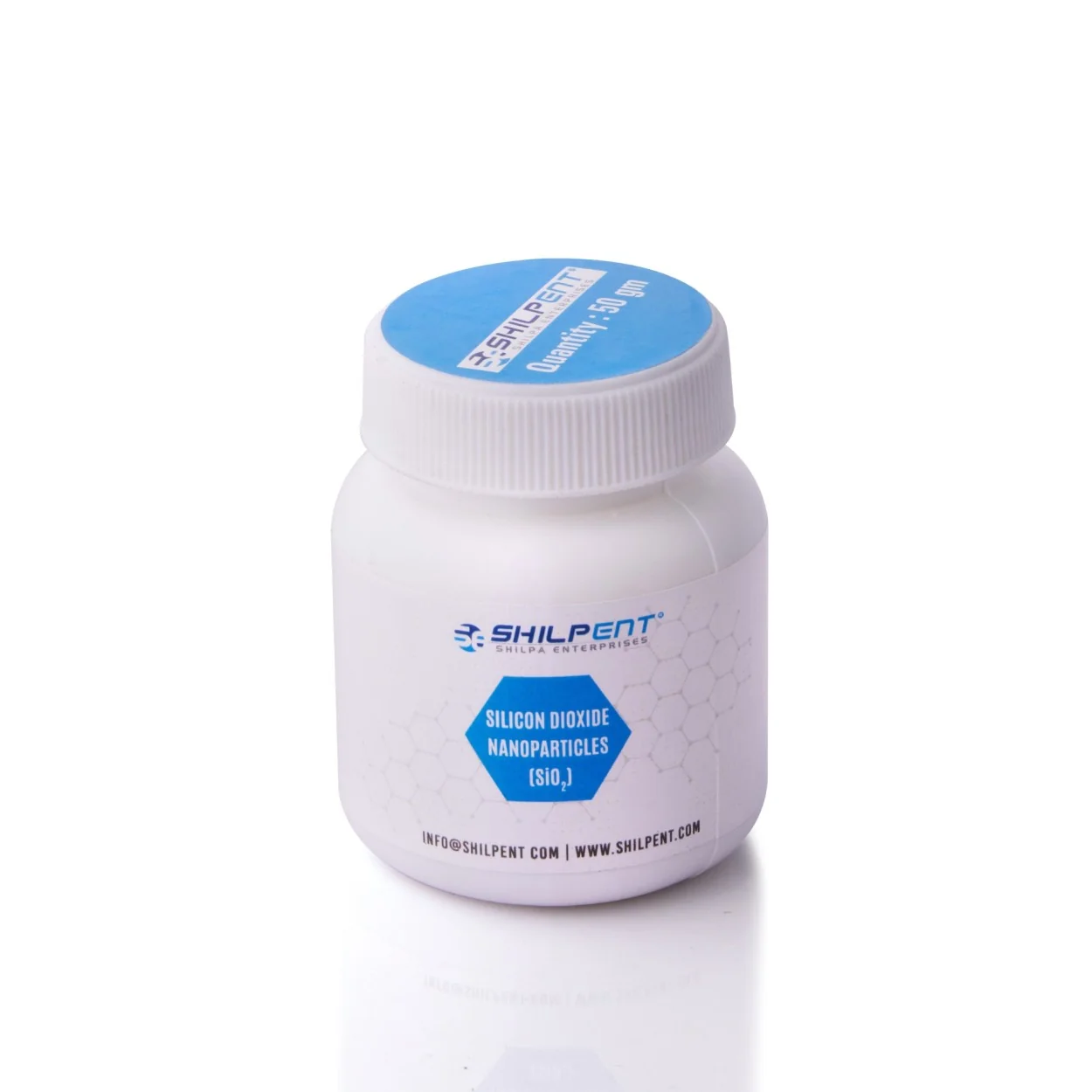Silicon Dioxide Nanoparticles
Features
- Composition: Silicon - Oxygen
- Melting Point: 1710 °C
- Boiling Point: 2950 °C
- Density: Variable (2.2-2.65 g/cm³)
- Purity: High (Above 99%)
- Synthesis Process: Controlled methods
- Structure: Crystal lattice
- Average Particle Size: 20-50 nm
- SSA: ~220 m2/g
- Molecular Weight: 231.533 g/mol
- Molecular Formula: SiO2
- Physical Form: Powder
- Morphology: Spherical
- Colour: White
- CAS No.: 7631-86-9
- Available Size: 100gm | 500gm | 1000gm
Description and Specifications of Silicon Dioxide Nanoparticles
Silicon Dioxide Nanoparticles, or silica nanoparticles, is super-small structures made from silicon and oxygen atoms. It is much tinier than human cells, about 1 to 100 nm in size.
Scientists create the particles in special labs to control its size and shape. The tiny particles are unique, and it stay strong in heat and is transparent. It's safe for living things. It makes things stronger and cleans the environment. In electronics, it improves screens and sensors. By using the small particles, scientists can make better materials and invent new things to make life easier.
Tiny particles called Silicon Dioxide Nanopowder, or nano-silica, is important for studying living things. It has different types, like P-type and S-type. The P-type has holes and reflects light, while the S-type is smaller. Nano-silica don't mix much with water and can handle acids. Its special formula is SiO2. When it gets hot, it becomes strong glass. Scientists make it using a special method, and it can stay stable in water and fit with biological stuff. The special tiny particles have many uses in science, like in biology, and people also use it as a size standard in tests.
Properties of Silicon Dioxide Nanoparticles
Size and Types: Incredibly small particles, similar to dust. There are two main types: P-type, with tiny holes and UV light reflection, and S-type, smaller with fewer holes.
Chemical Resilience: Do not react with water. Can withstand exposure to acids. The chemical formula is SiO2 (Silicon Dioxide).
Heat Resistant: When heated, it transforms into strong glass. Suitable for applications requiring high temperatures.
Synthesis and Stability: Created using specialized techniques. Remain stable in water and various biological environments.
Scientific Versatility: Valuable tools in scientific research. Used to test adhesion properties of materials. Widely utilized in biological studies. Serve as references in size-related tests.
Applications of Silicon Dioxide Nanoparticles
- Electronics & Optoelectronics
- Polymer & Composite Reinforcement
- Coatings & Surface Treatments
- Energy Storage & Conversion
- 3D Printing & Additive Manufacturing
How to use Silicon Dioxide Nanoparticles ?
Handling requires attention to safety. Follow these steps to ensure proper usage:
- Prepare safety gear such as gloves and glasses.
- Choose a well-ventilated workspace like a lab hood.
- Thoroughly mix liquid nanoparticles for even distribution.
- Follow recommended amounts for the task to avoid excess.
- Maintain cleanliness; avoid consuming food, drinks, or smoking.
- Clean tools are used to prevent leftover particles.
- Adhere to disposal regulations for waste containing nanoparticles.
- Store nanoparticles away from sunlight and heat.
- Review provided instructions and safety information.
- Tailor the approach as per specific application needs.
Safety Instructions
- Wear gloves and glasses for safety.
- Work in a place with good airflow to avoid breathing in particles.
- Keep SiO2 containers closed and in a cool, dry spot.
- Clean up surfaces after using SiO2 to prevent the spreading of particles.
- Always read labels and safety sheets for guidance.
Why Choose Us?
Shilpa Enterprises is a well-known manufacturer and supplier of Silicon Dioxide Nanoparticles. We believe in providing quality products only. We have a dedicated team with over ten years of experience in manufacturing high-quality silica and other nanoparticles. Our products are suitable for use in industries and research purposes. We provide the best prices for Silicon Dioxide Nanopowder so that it is affordable. The packaging is tamper-proof and secure. We offer worldwide delivery and also ship our products to any place around the world.

